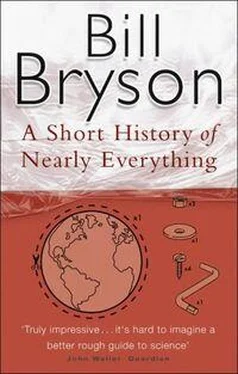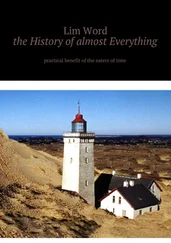Unfortunately, transits of Venus, as they are known, are an irregular occurrence. They come in pairs eight years apart, but then are absent for a century or more, and there were none in Halley’s lifetime. [5]But the idea simmered and when the next transit came due in 1761, nearly two decades after Halley’s death, the scientific world was ready-indeed, more ready than it had been for an astronomical event before.
With the instinct for ordeal that characterized the age, scientists set off for more than a hundred locations around the globe-to Siberia, China, South Africa, Indonesia, and the woods of Wisconsin, among many others. France dispatched thirty-two observers, Britain eighteen more, and still others set out from Sweden, Russia, Italy, Germany, Ireland, and elsewhere.
It was history’s first cooperative international scientific venture, and almost everywhere it ran into problems. Many observers were waylaid by war, sickness, or shipwreck. Others made their destinations but opened their crates to find equipment broken or warped by tropical heat. Once again the French seemed fated to provide the most memorably unlucky participants. Jean Chappe spent months traveling to Siberia by coach, boat, and sleigh, nursing his delicate instruments over every perilous bump, only to find the last vital stretch blocked by swollen rivers, the result of unusually heavy spring rains, which the locals were swift to blame on him after they saw him pointing strange instruments at the sky. Chappe managed to escape with his life, but with no useful measurements.
Unluckier still was Guillaume Le Gentil, whose experiences are wonderfully summarized by Timothy Ferris in Coming of Age in the Milky Way . Le Gentil set off from France a year ahead of time to observe the transit from India, but various setbacks left him still at sea on the day of the transit-just about the worst place to be since steady measurements were impossible on a pitching ship.
Undaunted, Le Gentil continued on to India to await the next transit in 1769. With eight years to prepare, he erected a first-rate viewing station, tested and retested his instruments, and had everything in a state of perfect readiness. On the morning of the second transit, June 4, 1769, he awoke to a fine day, but, just as Venus began its pass, a cloud slid in front of the Sun and remained there for almost exactly the duration of the transit: three hours, fourteen minutes, and seven seconds.
Stoically, Le Gentil packed up his instruments and set off for the nearest port, but en route he contracted dysentery and was laid up for nearly a year. Still weakened, he finally made it onto a ship. It was nearly wrecked in a hurricane off the African coast. When at last he reached home, eleven and a half years after setting off, and having achieved nothing, he discovered that his relatives had had him declared dead in his absence and had enthusiastically plundered his estate.
In comparison, the disappointments experienced by Britain’s eighteen scattered observers were mild. Mason found himself paired with a young surveyor named Jeremiah Dixon and apparently they got along well, for they formed a lasting partnership. Their instructions were to travel to Sumatra and chart the transit there, but after just one night at sea their ship was attacked by a French frigate. (Although scientists were in an internationally cooperative mood, nations weren’t.) Mason and Dixon sent a note to the Royal Society observing that it seemed awfully dangerous on the high seas and wondering if perhaps the whole thing oughtn’t to be called off. In reply they received a swift and chilly rebuke, noting that they had already been paid, that the nation and scientific community were counting on them, and that their failure to proceed would result in the irretrievable loss of their reputations. Chastened, they sailed on, but en route word reached them that Sumatra had fallen to the French and so they observed the transit inconclusively from the Cape of Good Hope. On the way home they stopped on the lonely Atlantic outcrop of St. Helena, where they met Maskelyne, whose observations had been thwarted by cloud cover. Mason and Maskelyne formed a solid friendship and spent several happy, and possibly even mildly useful, weeks charting tidal flows.
Soon afterward, Maskelyne returned to England where he became astronomer royal, and Mason and Dixon-now evidently more seasoned-set off for four long and often perilous years surveying their way through 244 miles of dangerous American wilderness to settle a boundary dispute between the estates of William Penn and Lord Baltimore and their respective colonies of Pennsylvania and Maryland. The result was the famous Mason and Dixon line, which later took on symbolic importance as the dividing line between the slave and free states. (Although the line was their principal task, they also contributed several astronomical surveys, including one of the century’s most accurate measurements of a degree of meridian-an achievement that brought them far more acclaim in England than the settling of a boundary dispute between spoiled aristocrats.)
Back in Europe, Maskelyne and his counterparts in Germany and France were forced to the conclusion that the transit measurements of 1761 were essentially a failure. One of the problems, ironically, was that there were too many observations, which when brought together often proved contradictory and impossible to resolve. The successful charting of a Venusian transit fell instead to a little-known Yorkshire-born sea captain named James Cook, who watched the 1769 transit from a sunny hilltop in Tahiti, and then went on to chart and claim Australia for the British crown. Upon his return there was now enough information for the French astronomer Joseph Lalande to calculate that the mean distance from the Earth to the Sun was a little over 150 million kilometers. (Two further transits in the nineteenth century allowed astronomers to put the figure at 149.59 million kilometers, where it has remained ever since. The precise distance, we now know, is 149.597870691 million kilometers.) The Earth at last had a position in space.
As for Mason and Dixon, they returned to England as scientific heroes and, for reasons unknown, dissolved their partnership. Considering the frequency with which they turn up at seminal events in eighteenth-century science, remarkably little is known about either man. No likenesses exist and few written references. Of Dixon the Dictionary of National Biography notes intriguingly that he was “said to have been born in a coal mine,” but then leaves it to the reader’s imagination to supply a plausible explanatory circumstance, and adds that he died at Durham in 1777. Apart from his name and long association with Mason, nothing more is known.
Mason is only slightly less shadowy. We know that in 1772, at Maskelyne’s behest, he accepted the commission to find a suitable mountain for the gravitational deflection experiment, at length reporting back that the mountain they needed was in the central Scottish Highlands, just above Loch Tay, and was called Schiehallion. Nothing, however, would induce him to spend a summer surveying it. He never returned to the field again. His next known movement was in 1786 when, abruptly and mysteriously, he turned up in Philadelphia with his wife and eight children, apparently on the verge of destitution. He had not been back to America since completing his survey there eighteen years earlier and had no known reason for being there, or any friends or patrons to greet him. A few weeks later he was dead.
With Mason refusing to survey the mountain, the job fell to Maskelyne. So for four months in the summer of 1774, Maskelyne lived in a tent in a remote Scottish glen and spent his days directing a team of surveyors, who took hundreds of measurements from every possible position. To find the mass of the mountain from all these numbers required a great deal of tedious calculating, for which a mathematician named Charles Hutton was engaged. The surveyors had covered a map with scores of figures, each marking an elevation at some point on or around the mountain. It was essentially just a confusing mass of numbers, but Hutton noticed that if he used a pencil to connect points of equal height, it all became much more orderly. Indeed, one could instantly get a sense of the overall shape and slope of the mountain. He had invented contour lines.
Читать дальше












